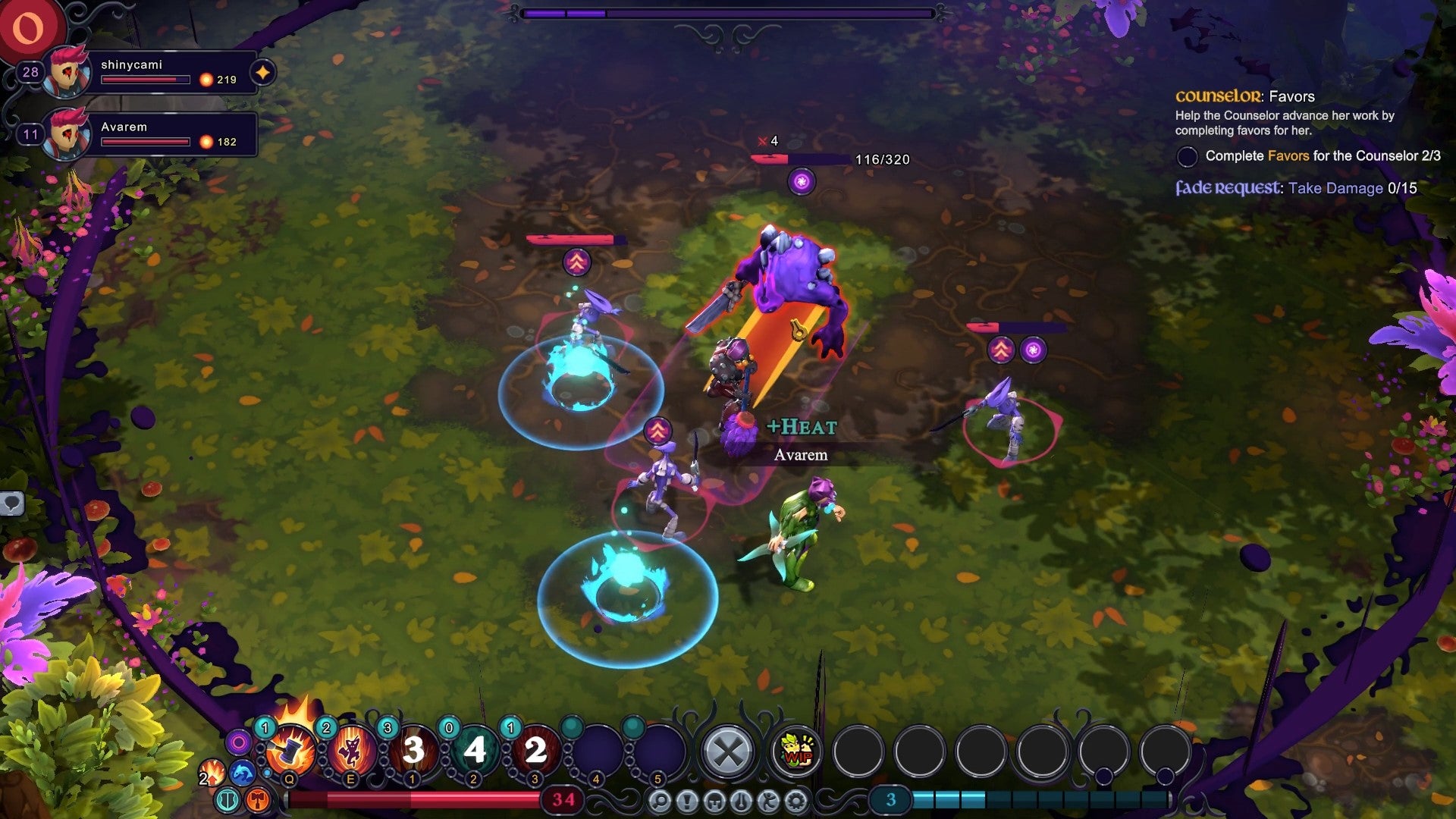I’m excited to report that I spent over an hour with the game alongside Shiny Shoe’s CEO Mark Cooke and creative director Andrew Krausnick, who were not only lovely but put up with my incredible ability to fumble my turns. Still, I was impressed by how the game’s speedy combat matched its roguelike needs, as it pushed us through even the trickiest of scenarios - as opposed to other strategy games which can feel like trudging through a sea of glue. I played a build that was early in every sense of the word. We’re talking not only the first portion of the game, but also placeholdery bits and the very real possibility that lots of the stuff I tackled could change quite significantly. But hey, I got to sample a run which worked really nicely, and gave me the chance to see whether Shiny Shoe’s latest take on a roguelike had the potential to hook me in. As is the case with most roguelikes, you begin in a hub area, this time called the Aetheneum, which will act as a home for NPCs and a place to gather your two pals before each run begins. Once you’ve opted to dive into an unranked or ranked run (more on the ranked run later), you’re periodically met with decisions that’ll steer you towards a build or an objective - again, like most other roguelikes. I voted for the starting stage that would lead us towards our quest of eating two fish, because eating fish is good for you. And, as you’d expect, you’re met with further decisions! You must choose one of three abilities, then select a Proving Ground that not only changes the theme of the upcoming stage, from barnacles to magma to an enchanted forest, but adds a mutator to make your run a bit trickier (though I’m pretty certain this bit wasn’t working in our build). Oh, but there’s one more decision: do you select an easy battle or a harder battle - especially if the tougher one reaps greater rewards like keys to unlock chests of booty? We often opted for the tougher ones, mostly because I knew deep down that Cooke and Krausnick would carry me on their poor, poor backs. Minus the combat, there’s a familiar rhythm to Inkbound’s runs. You upgrade yourself, perhaps heal up or spend your gold at places of respite, pick your preferred arena and difficulty, and dive into tougher and tougher fights. While much of the intermediary decision-making stuff was typical fare, it was the combat that helped things stand out. I played as the Magma Miner, while Cooke and Krausnick (splitting control of a single character) took on the role of a rogue armed with massive shurikens. Combat in Inkbound is a bit like Divinity Original Sin, where your character has a hotbar filled with abilities that cost a certain amount of points to use. Circles warn you whether you’re going to get hit or vice versa, and if you hover your mouse over an enemy you’re able to see all of their passive buffs and bonuses in clean text. But what makes Inkbound’s combat a much quicker affair is its flexibility. Unlike DOS – or many other RPGs – you aren’t rooted to the spot before you commit to a move. Instead there’s a slightly more open movement system. You’re able to freely wander about within the bounds of your ability points, which are used up the further you travel. There’s a lovely sense of freedom, as you explore some positional possibilities before you tee off a move, and what you lose in tension or risk you make up in convenience. What’s the perfect place for the area-of-effect slammo wammo? Or your smacky wacky which chains lightning to enemies and shocks them for a turn? Well, just have a quick wander about and find out. It’s especially brilliant for those of us who struggle to visualise moves before we make them. Movement is encouraged with glowy orbs that litter each arena. If you collect them during your round, you’ll earn back some ability points. Not only that, but each arena gradually develops a swirling fog that closes in between turns as fights drag on, with “drag on” not being that long at all, really. By no means does it impede on proceedings, but it acts as a nudge to completion rather than a frustration. Speedy fights don’t mean a lack of cool moments, either. I built my Magma dude as someone who inflicted stacks of burn on baddies I smacked, with the intention that I’d super-smack them with a pillar of fire which would cash in those stacks for a hefty chunk of damage. Incredibly, I pulled it off on some horrible purple worm and it was rad. Even Cooke and Krausnick were impressed! I executed on a very loose strategy! So yes, Inkbound does allow someone without much strategy chops to do fun and interesting things. My only worry with Inkbound lies in its progression, which sees you tackle ranked runs and attempt to climb a leaderboard, instead of, for example, unlocking permanent upgrades to make your runs easier or your Aetheneum prettier. It makes sense, considering this is more of an online co-op roguelikin’ venture with your friends. Shiny Shoe say there’s going to be seasonal progression with a battle pass filled with cosmetic items, new stages, and some tweaks to the Aetheneum, but I worry that this might not be enough to keep players coming back for more. It’s very early days, so my thoughts might be unfounded as development continues. Let’s hope so. No matter what, though, I had a great time with Inkbound and it’s definitely one to keep an eye out for, even if you’re not a strategy head like me.


